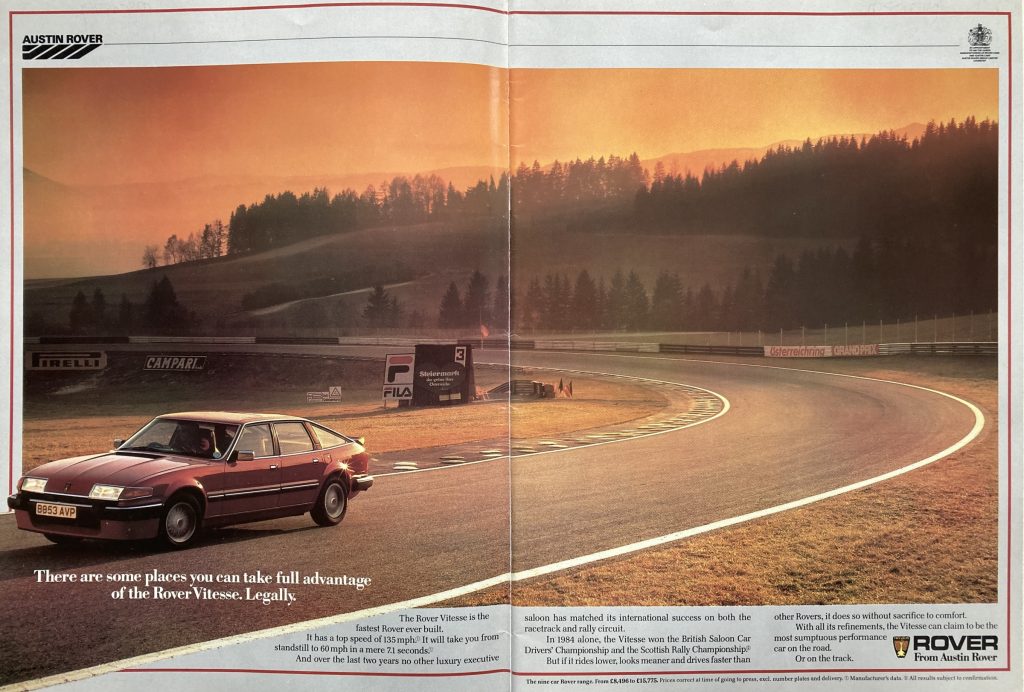You probably didn’t need to go all the way to the Österreichring, nearly 800 miles as the crow flies from where it was built in Cowley, to enjoy the Rover Vitesse.
But the circuit that is today named the Red Bull Ring and now, as then, hosts the Austrian Grand Prix certainly made for a spectacular backdrop for this 1985 advertisement for Rover’s brawny V8 fastback – a car it described as the fastest Rover ever built.

Probably no matter either that a factory standard SD1 would probably feel rather floppy on track. That isn’t a criticism of the Vitesse, more that it’s only relatively recently in the history of the car that performance models are truly capable of lapping quickly and consistently without feeling all at sea, their brakes catching fire, or parts of the drivetrain complaining.
You can see where Rover was going with the ad though. After all, as the copy points out, the Vitesse carried Andy Rouse to the British Saloon Car Championship title in 1984, and won the Scottish Rally Championship too, suggesting you didn’t even need a paved surface to exploit the car’s performance.

The Vitesse undoubtedly performed well for the day: 0-60mph in 7.1 seconds, and a top speed of 135mph. Hence the need for a track to reach such speeds legally (or, depending on the route you took to the Österreichring, a few sections of German autobahn would’ve done it too).
There wasn’t really anything you could realistically compare it against, at least at the same £15k-or-so price point; turbocharged models like the Sierra Cosworth were still around the corner, and BMW’s brand new M535i cost nearly £19,000. Closest, ironically, was the Austin Rover Group’s own MG Montego Turbo, which was very nearly as quick off the mark and a whole lot cheaper at £10,600, but also a very different car to the more GT-like Vitesse.
And maybe that’s the subtext behind this ad’s Austrian adventure, because you wouldn’t just have fun (well, maybe) on a circuit in the big V8, but the journey across most of Europe would be quite appealing too, luxuriating in the spacious, airy cabin and rumbling along to the tune of 3.5 litres and eight cylinders.
Indeed, why stop at the Österreichring? We’d have been tempted to carry on a little further. Monza, maybe?
Read more
Concept Cars That Never Made The Cut: MG Rover RDX60
Buying Guide: Rover SD1 (1976–1986)
11 sports cars powered by the Rover V8









